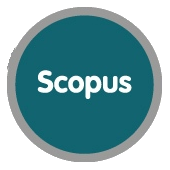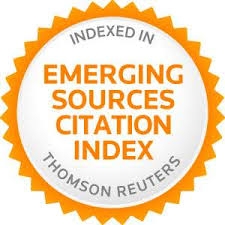El respeto por la complejidad del aprendizaje:una propuesta para un nuevo modelo de aprendizaje del profesorado
Resumen
Referencias
Alper, S. & Ryndak, D.L. (1992). Educating students with severe handicaps in regular classes. The Elementary School Journal, 92(3), pp. 373-387.
http://dx.doi.org/10.1086/461698
Anderson, K. (1997). Gender bias and special education referrals. Annals of Dyslexia, 47, 151-162.
http://dx.doi.org/10.1007/s11881-997-0024-8
Artiles, A.J. & Trent, S.C. (1994). Overrepresentation of minority students with severe handicaps in regular classes. Journal of Special Education, 27(4), pp. 410-437.
http://dx.doi.org/10.1177/002246699402700404
Artiles, A.J., Fletcher, T., & Pastore, C. (1997, August). Panel on International Special Education Reform, International Association of Special Education, Cape Town, South Africa.
Audette, B. & Algozzine, B. (1997). Reinventing government? Let's reinvent special education. Journal of Learning Disabilities, 30(4), pp. 378-383.
http://dx.doi.org/10.1177/002221949703000404
Audette, B. & Algozzine, B. (1992). Free and appropriate education for all students: Total quality and the transformation of American public education. Remedial and Special Education, 13(6), 8-18.
http://dx.doi.org/10.1177/074193259201300605
Berninger, V.W. & Abbott, R.D. (1994). Redefining learning disabilities: moving beyond aptitude-achievement discrepancies to failure to respond to validated treatment protocols. In G.R. Lyon (Ed.) Frames of reference for the assessment of learning disabilities: new visions on measurement issues (pp. 163-184). Baltimore: Brookes.
Brady, S. & Moats, L. (1997). Informed instruction for reading success: foundations for teacher preparation. Baltimore: International Dyslexia Association.
Calhoun, C., Light, D., & Keller, S. (1997). Sociology. NY: McGraw-Hill.
Chase, C.H., Rosen, G.D., & Sherman, G.F. (Eds.). (1996). Developmental dyslexia, neural, cognitive and genetic mechanisms. Baltimore: York.
Clune, W.H. & White, P.A. (1988). School-Based Management: Institutional Variation, Implementation, and Issues for Further Research. New Brunswick, New Jersey: Rutgers University Center for Policy Research in Education.
Cohen, S.S., Thomas, C.C., Sattler, R.O. & Morsink, C.V. (1997). Meeting the challenge of consultation and collaboration: developing interactive teams. Journal of Learning Disabilities, 30(4), 427-441.
http://dx.doi.org/10.1177/002221949703000409
Cronin, M. (1996). Life skills curricula for students with learning disabilities: a review of the literature. Journal of Learning Disabilities, 29(1), 53-68.
http://dx.doi.org/10.1177/002221949602900108
Dana, R.H. (1993). Multi-cultural assessment perspectives for professional psychology. Boston: Allyn & Bacon.
Dewey, J. (1938). Experience and education. New York: Collier Books.
Dudley-Marling, C. (1990). When school is a struggle. Richmond Hill: Scholastic Canada.
Eldridge, J.S. (1997). Inclusion in Canada: reality, problems and solutions. International Association of Special Education, Cape Town, South Africa, August 7, 1997.
Fennell, E.B. (1995). The role of neuropsychological evaluation in learning disabilities. Journal of Child Neurology, 10(1), S36-41.
Ferrante, J. (1998). Sociology, a global perspective. Belmont, CA: Wadsworth.
Gardner, H. (1983). Frames of mind. NY: Basic.
Gartner, A. & Lipsky, D.K. (1987). Beyond special education: toward a quality system for all students. Harvard Educational Review, 57(4), 367-394.
http://dx.doi.org/10.17763/haer.57.4.kj517305m7761218
Gibson, S. & Dembo, M.H. (1984). Teacher efficacy: a construct validation. Journal of Educational Psychology, 76(4), 569-582.
http://dx.doi.org/10.1037/0022-0663.76.4.569
Gordon, J. (1984, November). Neuropsychology: the study of brain/behavior relationships. Inservice training at Pennsylvania Hospital.
Hudson, P. & Glomb, N. (1997). If it takes two to tango, then why not teach both partners to dance? Collaboration instruction for all educators. Journal of Learning Disabilities, 30(4), pp. 442-448.
http://dx.doi.org/10.1177/002221949703000411
Idol, L. (1997). Key questions related to building collaborative and inclusive schools. Journal of Learning Disabilities, 30(4), 384-394.
http://dx.doi.org/10.1177/002221949703000405
Larrivee, B. & Cook, L. (1979). Mainstreaming: a study of the variables affecting teacher attitude. Journal of Special Education, 13, 315-324.
http://dx.doi.org/10.1177/002246697901300310
Leonard, J.F. (1991). Applying Deming's principles to our schools. South Carolina Business, 82-87.
Lerner, J. (1997). Learning disabilities. Boston, MA: Houghton Mifflin.
Lester, G. & Kelman, M. (1997). State disparities in the diagnosis and placement of pupils with learning disabilities. Journal of Learning Disabilities, 30(6), 599-607.
http://dx.doi.org/10.1177/002221949703000603
Levine, M.D. (1987). Developmental variations and learning disorders. MA: Educator's Publishing Service, Inc.
Lezak, M.D. (1983). Neuropsychological assessment. NY: Oxford.
Lipsky, D.K. & Gartner, A. (1989). Beyond special education: quality education for all. Baltimore: Brookes.
Luria, A.R. (1973). The working brain: an introduction to neuropsychology. (B. Haigh, trans.). NY: Basic.
Luria, A.R. (1970). The functional organization of the brain. Scientific American, 222, 2-9.
http://dx.doi.org/10.1038/scientificamerican0370-66
Luria, A.R. (1966). Higher cortical functions in man. (B. Haigh, trans.). NY: Basic.
Lyon, G.R. (1994). Critical issues in the measurement of learning disabilities. In G.R. Lyon (Ed.) Frames of reference for the assessment of learning disabilities: new views on measurement issues (pp. 3-13). Baltimore: Brookes.
Lyon, G.R. & Moats, L.C. (1997). Critical conceptual and methodological considerations in reading intervention research. Journal of Learning Disabilities, 30(6), 578- 588.
http://dx.doi.org/10.1177/002221949703000601
Lyon, G.R. (1995). Research initiatives in learning disabilities: contributions from scientists supported by the National Institute of Child Health and Human Development. Journal of Child Neurology, 10 (Suppl. 1), S120-126).
Lyon, G.R. (1996). Learning disabilities. The Future of Children, 6(1), 54-76.
http://dx.doi.org/10.2307/1602494
Madden, N.A. & Slavin, R.E. (1983). Mainstreaming students with mild handicaps: Academic and social outcome. Review of Educational Research, 53, pp. 519-569.
http://dx.doi.org/10.3102/00346543053004519
Mann, V. (1991). Language problems: a key to reading problems. In B. Wong (Ed.). Learning about learning disabilities (pp. 130-163). San Diego: Academic Press.
http://dx.doi.org/10.1016/b978-0-12-762530-0.50011-4
Merton, S. & Yarger, S.J. (1981). Teacher centers in action. Syracuse, NY: Syracuse Area Teacher Center.
Moats, L.C. & Lyon, G.R. (1993). Learning disabilities in the United States: advocacy, science and the future of the field. Journal of Learning Disabilities, 26(5), 282-294.
http://dx.doi.org/10.1177/002221949302600501
Muskat, L.R. (1996). Empowering students with special needs: assessment and classification revisited. In G. Reid, G. (Ed.), Dimensions of dyslexia, Vol. 2 (pp. 405-432). Glasgow: Bell & Bain, Ltd.
Muskat, L.R. (1997, August). Dealing with diversity in the classroom: introducing a System for Understanding Individual Learning Performance,International Association of Special Education, Cape Town, South Africa.
O'Shea, D.J. & O'Shea, L.J. (Eds.). (1997). What have we learned and where are we headed? Issues in collaboration and school reform (Special series). Journal of Learning Disabilities, 30(4), 376-377.
http://dx.doi.org/10.1177/002221949703000403
Pino, E. (1995, August). Of Mud Huts and Glass Houses. International Association of Special Education, Brighton, England.
Sarason, S.B. & Doris, J. (1979). Educational handicap, public policy, and social history. San Francisco: Jossey-Bass.
Sawyer, D. & Butler, K. (1991). Early language intervention: a deterrent to reading disability. Annals of Dyslexia, 41, 55-79.
http://dx.doi.org/10.1007/BF02648078
Schunk, D.H. (1991). Self-efficacy and cognitive achievement: implications for students with learning problems. Journal of Learning Disabilities, 22(1), 14-22.
http://dx.doi.org/10.1177/002221948902200103
Shaywitz, B.A., Fletcher, J.M., & Shaywitz, S.E. (1995). Defining and classifying learning disabilities and attention deficit/hyperactivity disorder. Journal of Child Neurology, 10(1), S50-S57.
Showers, B., Joyce, B., & Bennett, B. (1987). Synthesis of research on staff development: A framework for future study and state-of-the-art analysis. Educational Leadership, pp. 77-87.
Sickler, J.L. (1988). Teachers in charge: Empowering the professionals. Phi Delta Kappa, 375, pp. 354-356.
Simpson, R.L. & Myles, B.S. (1990). The general education collaboration model: a model for successful mainstreaming. Focus on Exceptional Children, 23(4), pp. 1-10.
Speece, D.L. (1993). Broadening the scope of classification research: conceptual and ecological approaches. In G.R. Lyon, D.B. Gray, J.F. Kavanaugh & N.A. Krasnegor (Eds), Understanding learning disabilities: new views from research and their implications for education and public policies (pp. 57-72). Baltimore: Brookes.
Stanovich, K. E. (1991). Discrepancy definitions of reading disability: has intelligence led us astray? Reading Research Quarterly, 26, 1-29.
http://dx.doi.org/10.2307/747729
Thayer, L. (1973). Communication and communication systems. Illinois: Richard D. Irwin, Inc.
Wilson, A. & Silverman, H. (1991). Teachers' assumptions and beliefs about the delivery of services to exceptional children. Teacher Education and Special Education, 14(3), 198-206.
http://dx.doi.org/10.1177/088840649101400307
Ysseldyke, J.E., Algozzine, B., & Thurlow, M. (1992). Critical issues in special education (2nd. ed.). Boston: Houghton Mifflin.
Enlaces refback
- No hay ningún enlace refback.


